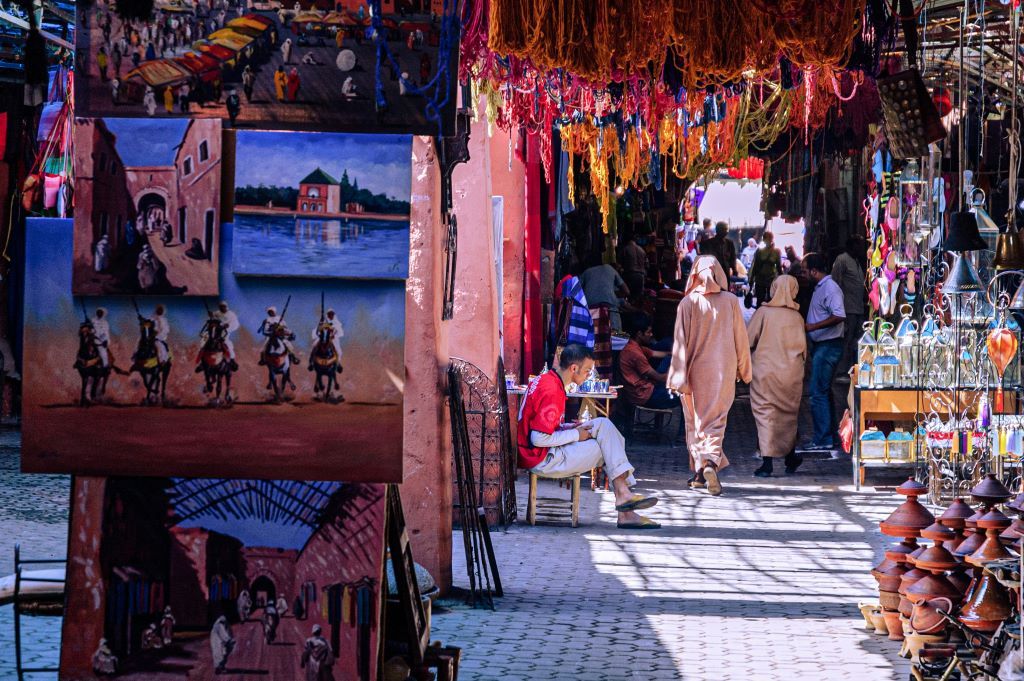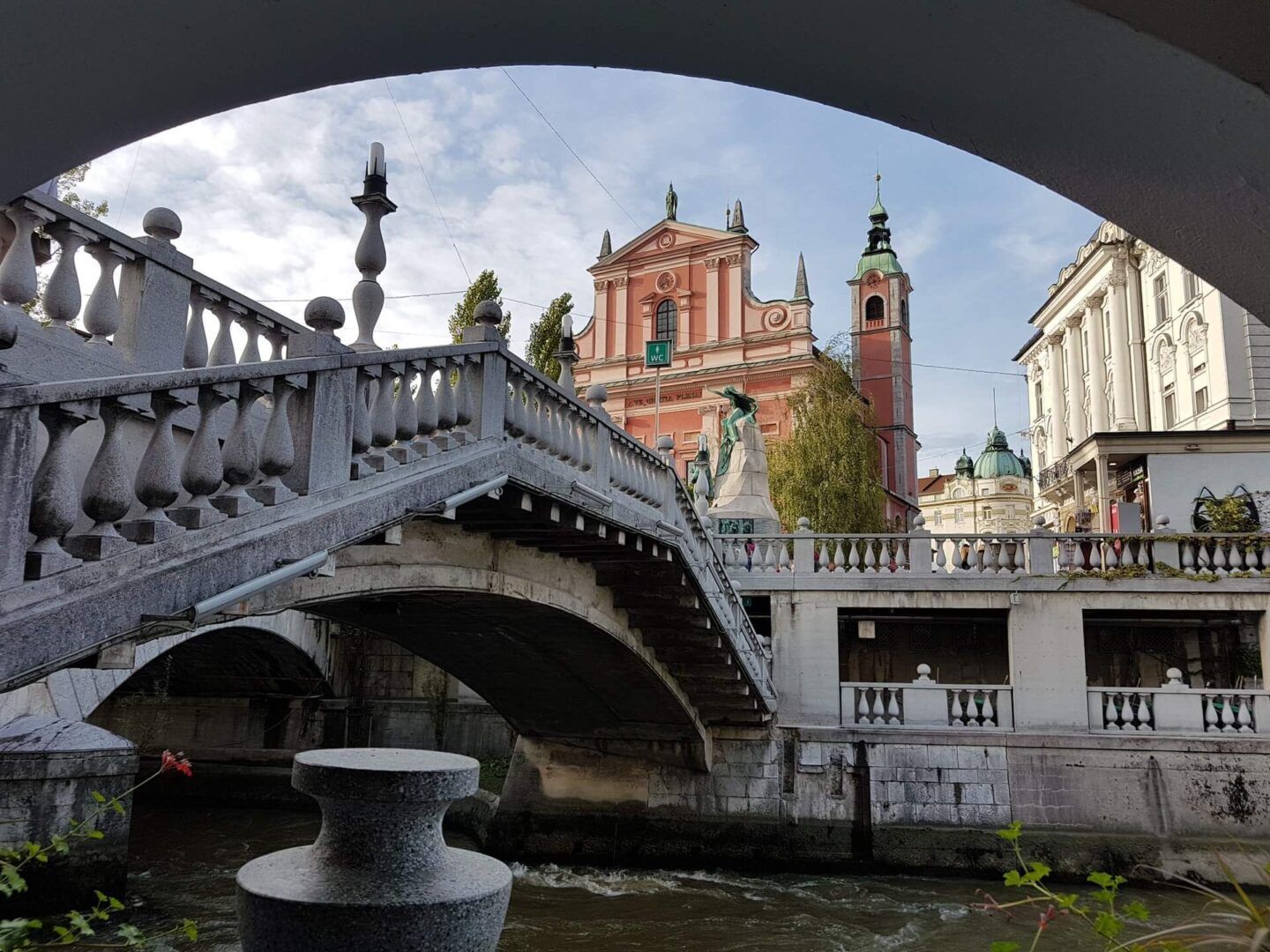

If you are fond of nature, hiking in the countryside, or maybe you love walking in the forests or reserves, or if you never miss a day at the lake or a holiday stroll, then you will have innumerable places to visit in Slovenia.
This country is about the size of an English county. It is rich in history, natural beauty and culture. The more prominent (and mainstream) European countries have nothing on it.
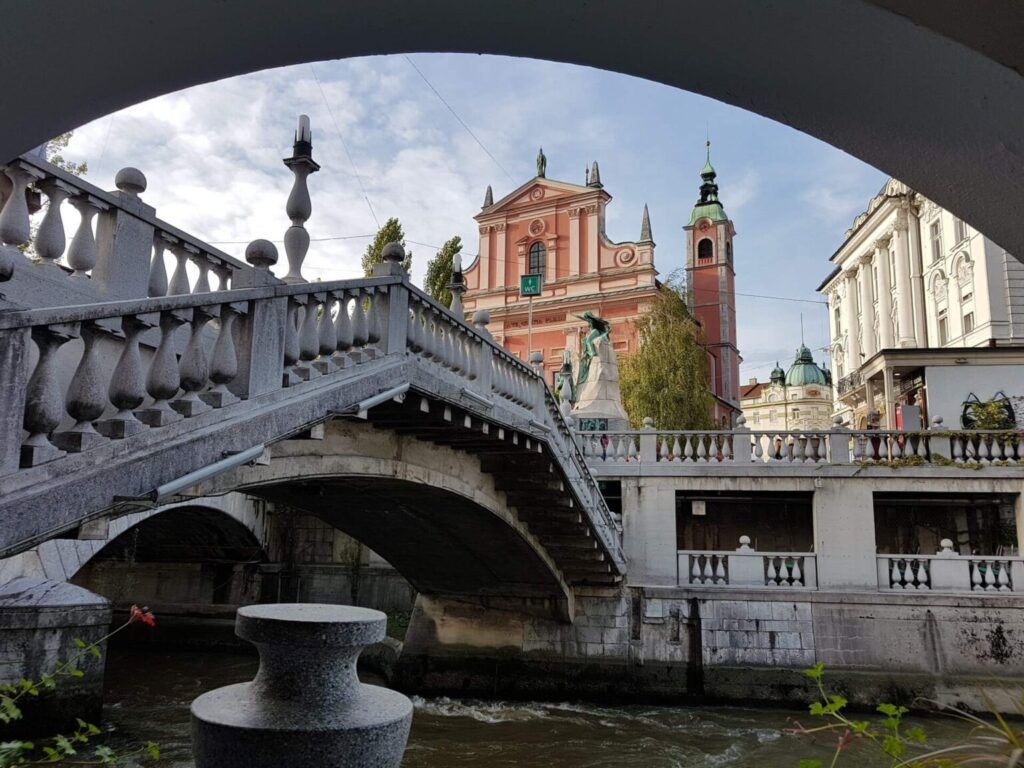
Slovenia’s landscape is singular and has a constant alternation of elements. Mountains are often capped with snowy peaks, green valleys, caves and gushing waterfalls: nothing is missing! And if you are passionate about sports, you have your options here. Hiking, cycling, caving or canyoning are the order of the day, at least they are during the right season. Slovenia is also famous for two main attractions: the capital Ljubljana and Lake Bled.
But to tell you the truth, if Ljubljana’s atmosphere does not conquer you, you can take refuge in quieter and picturesque villages. Alternatively, if you love nature, in addition to lakes, there are mountains and valleys just waiting to be discovered. In short, whether you are interested in a city holiday or are ready to tackle an experience or an outdoor adventure, Slovenia has tons to see and do. Which places to visit in Slovenia? Let’s discover them together!
Ljubljana
Where else could we begin our journey of places to visit in Slovenia other than its capital? Although Ljubljana is one of the smallest capitals in Europe, its beauty is not diminished by size.
An example? Just consider that it manages to host up to 10,000 cultural and musical events on average every year. This includes the Ljubljana Festival which celebrated 70 years of love for ballet, opera and musicals in 2022. Ljubljana can conquer you with its unique views, as every corner of the city emanates its personality’s shade.
Each district boasts its own history and distinctive features, whether they are medieval, baroque or modern. This mix of styles and beauty is partly due to the genius of the architect Jože Plečnik, who in the 1920s passionately fulfilled his task of reinventing the city’s urban planning. The capital is ready to involve its visitors in countless ways. Here is a list of things to absolutely see in Ljubljana.
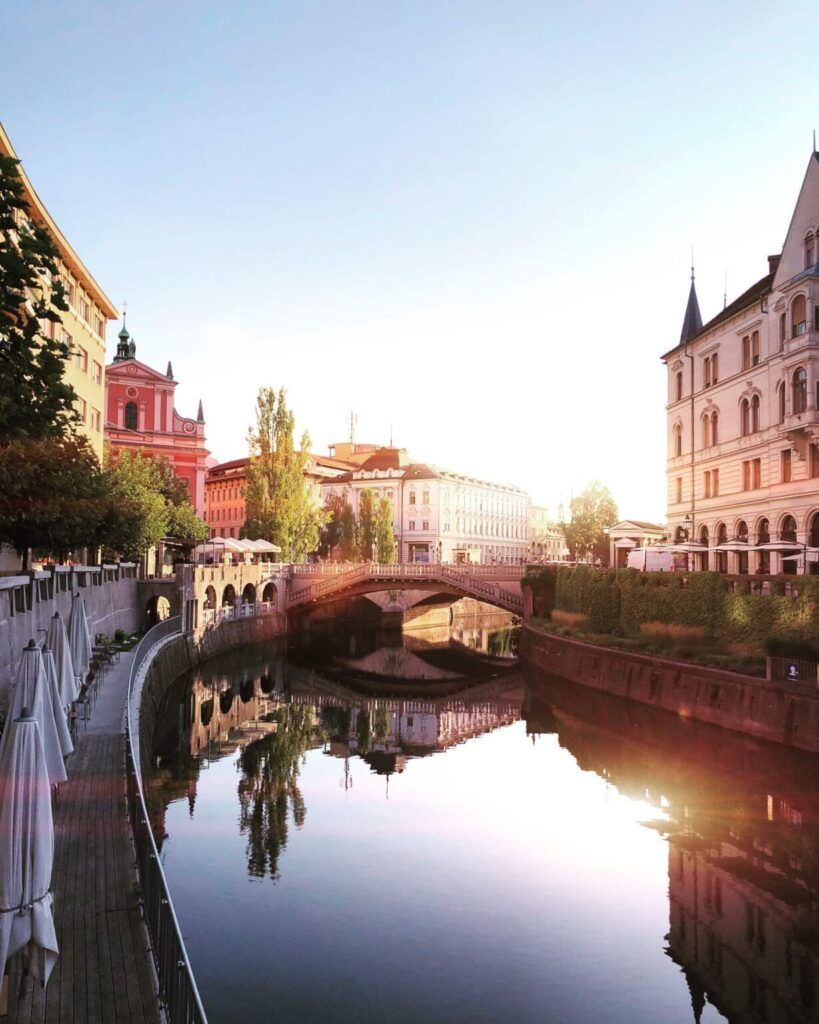
Ljubljana and its bridges
Two bridges in the city are a fixture for tourists from all over the world. The first is the Dragon Bridge, one of Ljubljana’s most iconic attractions and unquestionably top of the list to visit in the capital. The bridge was built at the beginning of the 20th century and beholds two legends well worth knowing.
In the first story, it is said that the Greek hero Jason was the true founder of the city in ancient times and that he killed a dragon right here (as depicted in the copper statues that dominate the bridge today). The second says that when a virgin crosses the bridge the four dragons wag their tails.
Between urban and ancient legends, this bridge is today a relevant meeting point. It was also a source of inspiration for all of Europe in the past as a prominent monument of architecture in the “Secession” style of the nineteenth and twentieth centuries.
The second is called “Triple Bridge” and is located outside Prešeren Square. This is essentially a group of three bridges decorated with stone balustrades and lanterns. The oldest of the three is the central bridge that dates back to 1842, initially intended for road traffic. In 1932 the two side bridges reserved for pedestrians were inaugurated, designed by Jože Plečnik, who, as we mentioned, was one of the most famous architects in Ljubljana.
Ljubljana Castle
Ljubljana Castle is one of the city’s main attractions. Entering you can witness numerous historical periods of the city, in a perfect symbiosis between medieval and modern architecture.
Climbing the lookout tower you come in contact with modernity first-hand, with a great view from the top of the city. For the braver at heart, there is a small corner of antiquity (and fear). Descending into the castle’s heart you can explore its darker side with the dungeons and prisons.
From 1868 until the end of the Second World War, the castle was used as a prison. One of the most interesting attractions to see here is the Puppet Museum. The care and creation of these particular dolls is one of the oldest traditions of Slovenian culture. This museum can certainly offer you an overview of this ancient art.
The Cathedral of Saint Nicholas
The Cathedral of Saint Nicholas should be on anyone’s list on a visit to the city and is the most important (and best-known) place of worship in all of Ljubljana.
It is easily recognisable by its characteristic green dome, as well as the two adjacent towers. We should point something out here: today’s cathedral is not the original. The real church, which stood on the ruins of an older Romanesque church, was razed twice. The first time by a fire in 1361 and the second (most likely) by the Turks, in 1469. Despite this misfortune, it is one of the most significant cathedrals in the country and houses frescoes painted in 1844 by the artist Matevž Langus.
Among the many additions made in the 20th century, the main bronze door is noteworthy. It was created by the sculptor Tone Demšar, for a crucial event. The 1250 years of Christianity among the Slovenes, an emotionally widespread goal.
Maribor
We continue our list of the top places to visit in Slovenia and head to Maribor. It is the second-largest city in the country. The real reason for its European fame is that it hosts the oldest vine in the world. Has grown in the heart of the city for over 450 years. It is the Žametovka grape variety or blue Franconia.
The vine is listed in the Guinness Book of Records. In its honour a small museum has been opened, the House of the Old Vine. The history of this city’s heritage is briefly explained here, which was established in Medieval times when Maribor was attacked by the Turks. We can say that the vine is a champion of resistance! It still thrives despite the city’s repeated fires, sieges and bombings. We recommend a trip to the wine bar inside the museum. It is a fairly large space dedicated to tastings. You can sample the fine wines of the Slovenian Styria wine region and perchance make one or two purchases.
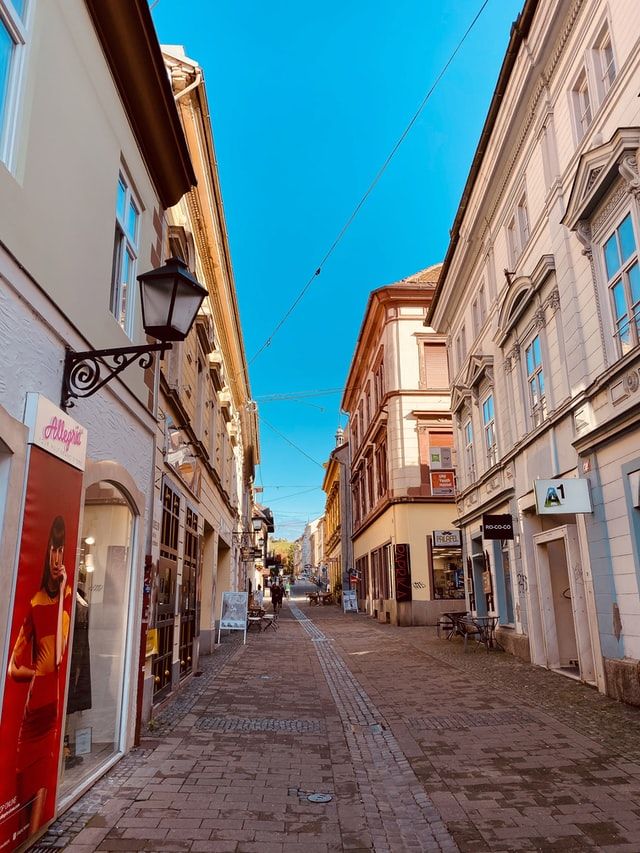
The ancient vine’s manor overlooks the Lent, i.e. the city’s river port, bordered by the Drava River. It is a lively area, populated by numerous clubs along the river.
If after attending the tastings you still fancy a nightcap, you are already in the right area! Do not miss the city’s two main squares. One is Glavni trg, i.e. the Main Square and the second is Grajski trg, i.e. the Castle Square. The first is a Renaissance-style square, now packed with assorted tables, to accommodate citizens and university students every day. The second houses the Regional Museum of Maribor, where you can learn more about the city’s history and culture.
Radovljica
Sun, history and honey: if you had to pick three words to define Radovljica, these would be your choices. The city is known as the sunniest in Haute Carniola. Historically is also referred to as the sweetest in Slovenia. So how could we not include it in the list of places to visit in Slovenia?
It certainly earned this name, since it hosts the Chocolate Festival of Slovenia in April. The centuries-old tradition of Slovenian beekeeping (and therefore of honey) is also held in Radovljica. The famous Carniolan honey bee originates here. This insect is well known to experts for its docility, especially when compared to similar members of the same species. The relationship between bees and man is very much felt in the national culture in Slovenia, so much so that here in Radovljica you can visit the Museum of Beekeeping. It is an attraction that undoubtedly celebrates the goodness of national honey, but also the need to preserve bees and provide a healthy environment for them, considering the fundamental importance they play in our ecosystem.
To sample the honey’s sweetness from these areas we recommend a trip to Casa Lectar. It is one of the ancient houses overlooking Linhart Square. Here, they produce “lect” by hand. These are delicious heart-shaped gingerbreads that represent a delight that only the most affluent could afford in the Middle Ages. Sun and sweetness: undoubtedly we can say that the city presents itself well. The city’s origins are very ancient, but the historic centre was rebuilt after an earthquake in 1511. Today it is characterised by a unique Renaissance style. Here you can enjoy a beautiful view of the Sava Valley and the Alps. In short, it is undeniably a place to visit during a trip to Slovenia!
Koper
In the list of things and places to visit in Slovenia, you need its gateway city, Koper. Koper is one of the crucial places in the country. It is considered its gateway to the world as one of the most momentous commercial ports in the Balkan state.
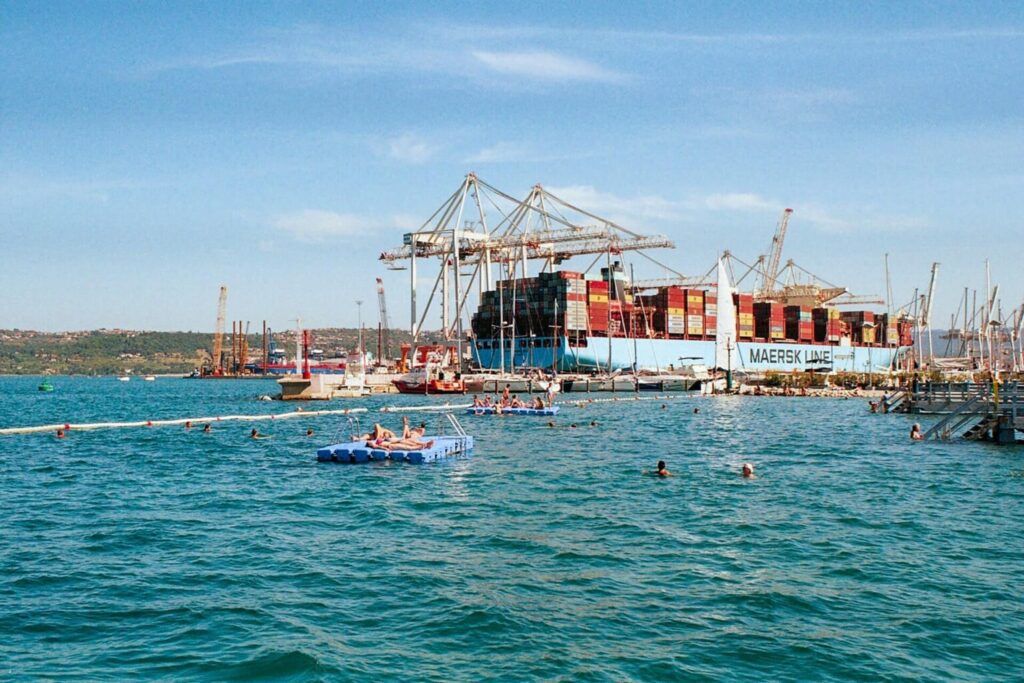
Visiting these historic cities is easy thanks to a vast network of cycle paths and a cast pedestrian area. Walking around Koper resembles Italy a bit. Koper and the other Istrian cities have a central link to Italy, after almost five centuries of Venetian domination. However, lest we forget that the primacy of conquest over the city belongs to the ancient Greeks. This already appears in the writings with the name Aegida.
A visit to Koper must necessarily start from Tito Square, the old city’s heart. We find ourselves in front of one of the most beautiful examples of a Venetian-style square in the Adriatic area. Among the buildings that overlook it, there is the Praetorian Palace. We are already familiar with this style, Venetian Gothic, recognisable by the lions of Saint Mark.
Nowadays, the palace is the seat of the municipality, but it used to serve as the mayor’s home, one of the greatest figures of the Serenissima and then of the greatest council of Koper. The Palace offers a view of Cevljarska Ulica (Shoemakers’ Street). Its name reveals the city’s commercial vocation, which is still maintained today, although the old workshops have now been replaced by modern boutiques.
If you love shopping, take a stroll here! Moving in the artistic field, a visit to Koper deserves a stop at Carpaccio Square, a piece of the city dominated by brightly colourful houses dedicated to the homonymous Venetian painter.
Here you can also find the Column of Saint Justina, built to celebrate the victory of Christians in Lepanto in 1571, and the Tavern, a portico used for the supply of rooms that nowadays hosts markets and concerts.
The Slovenian coast: Piran
What places to visit in Slovenia? The beaches! Although this small Central European nation has only a few tens of kilometres of coastline, it conceals a small pearl. Piran is a small village with a strong Venetian influence, like the entire Adriatic coast of Levante.
Located along the Istrian coast facing west, it is characterised by narrow alleyways paved with the typical medieval atmosphere. Piran occupies the tip of a short peninsula, extending like a finger into the turquoise waters of the Adriatic Sea.
If you are staying in Piran, our advice is to rent bicycles. You can get around quickly in freedom and admire the Slovenian coast’s beauty from the Parenzana cycle path. If instead, you prefer to walk, we’ll give you a tiny romantic warning. You will get the continuous impression of walking in a bygone place.
The city’s medieval walls only add to this effect, along with the fishermen who gather and mend their nets along the pier and salt flats along the coast. Speaking of salt and walks, once you reach the central square, Tartini Square, you will spot a small shop where you can buy the products from the local salt pans.
Here the owners have created the “Solnce Piranska Sol” or the “Salt of Piran” brand, which is an excellent souvenir to bring home to friends and family. The main church of Piran is Saint George, with a bell tower that vaguely recalls a miniature version of Saint Mark. A subtle recollection that Venice has long been the capital of these places. With €2, you can access the panoramic terrace by climbing 140 steps, and thus have a splendid all-around view of the city. Another unmissable square is that of 1st May Square (originally Stari or Old Square) where you can see a large rainwater cistern. We can deduce that this place was the city’s heart in medieval times, a meeting place for the inhabitants to quench their thirst and meet.
Portorož
From Piran, you can easily reach Portorož, another of the places to visit in Slovenia. Portorož is not the typical WeRoader’s location, but we mention it for those who love gambling and nightlife. Here you will find architecture with a strong Venetian influence, rich in Art Nouveau buildings and populated by many spa centres.
But in addition to massages and treatments, Portorož is also perfect for anyone seeking nightlife, as previously mentioned. There are not only numerous bars and restaurants, but also several casinos, so much so that they win the title of Monte Carlo of the Adriatic.
At sunset, the shores become the real club and we suggest you taste Ganje, a typical aperitif based on juniper, cherries and plums. Generally, this fragrant cocktail is served with Prut or the typical local ham. To cut a long story short, good food, cocktails, sea and entertainment. Portorož is the perfect place for a beach holiday in Slovenia!
Lasko
What places to visit in Slovenia? Lasko! It is a small town famous for the beneficial effects of its thermal water. If Slovenia is packed with numerous active experiences, we can consider this city as a pleasant break to relax the body and mind. For anyone who wants to enjoy a little relaxation, Lasko Spa offers medical, wellness and Ayurvedic programmes, as well as indoor and outdoor thermal pools, with many waves and games for children, hot tubs, a large wellness area and of course a gym. It is the perfect place to pamper yourself.
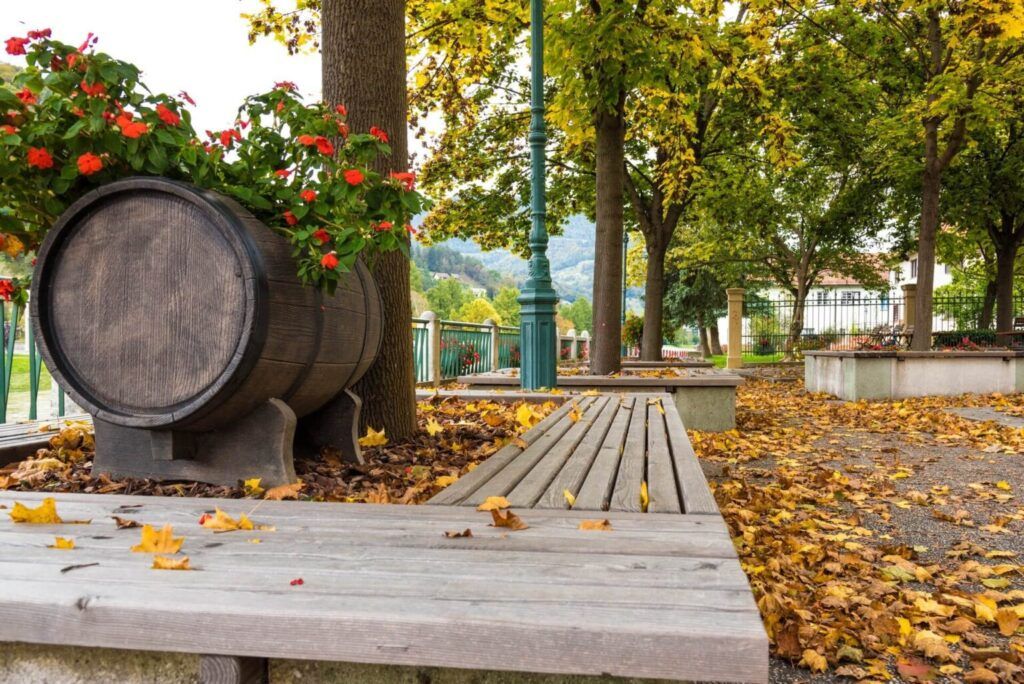
But Lasko is not just relaxation: there is also beer among its treasures. Lasko Beer attracts numerous visitors and claims a historical production that began in 1825. These thermal experiences are often combined with the passion for the drink based on hops and barley, so much so that beer treatments are very common. It can be enjoyed in the Pivovarna Brewery in Laško with elicitations on the production and final tasting.
In addition to beer and wellness, which are two legitimately great reasons to visit the city, Laško does not lack other things to see. Strolling through the centre’s tiny streets, you cannot miss the Church of San Martino. It is a small Gothic church of the ninth century, where you can appreciate the various architectural styles.
Shortly after the cathedral is the Laško Museum. This is a must-visit to comprehend better the two previously mentioned aspects, i.e. beer and well-being, but also discover more about the city’s history, the famous brewery and its owners, the particular geology and the origin of beneficial water sources. And so, you simply have to visit Tabor Castle. Its summit offers an all-around view of the Savina valleys and what’s more, you can delight your palate. Nowadays, the castle houses a state-of-the-art restaurant with high-class contemporary cuisine, as well as a wine bar.
Lake Bled
Among the places to visit in Slovenia, you cannot skip Lake Bled. It is a truly magical place not only because of its beauty but because Slovenian legends speak of its creation by fairies. According to local folklore, the space now occupied by the lake would originally have been a valley full of lush grass where shepherds brought sheep farms to graze.
It is said that fairies, concerned that the animals would eat the grass, which they loved and used as a dance floor, decided to flood the valley. Thus a lake was created with an islet in the centre, where they could continue to dabble in night dances, without being disturbed by the fauna. Several activities can be done here. The first that we recommend is to tour the lake by boat, specifically in a pletna (the typical local boat), paddleboard or kayak. It takes about two hours by boat and there is no shortage of opportunities for snapshots of romantic views.
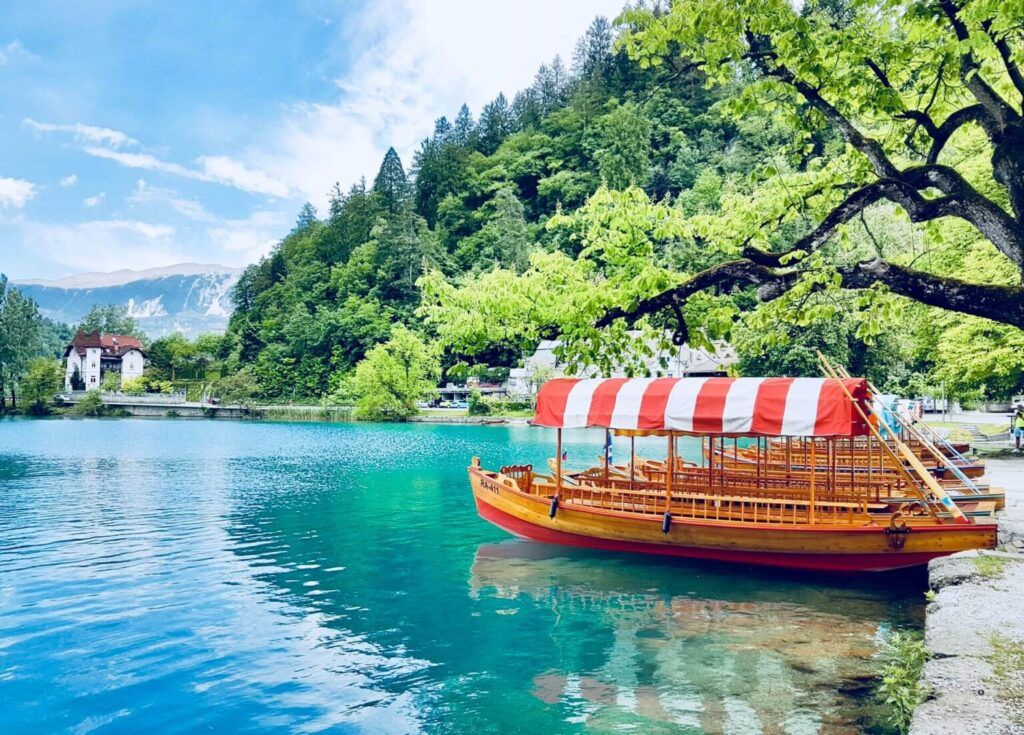
Tip: choose your companion well, because the atmosphere is that of a romantic film! If your tour of Slovenia takes you to discover Bled in summer, you should not miss a refreshing swim in the lake’s crystal clear waters.
Another tip to visit this area is to do it by bike. It is one of the best ways to get around and enjoy small breaks, relaxing on the various beaches, such as Velika Zaka on the south-western side, or the pools of Grajsko kopališče on the northern side. Alternatively, if you want to combine a love of hiking with the desire for an overhead view, then you need to climb up to the Mala Osojnica. It is an uphill route of about an hour that will give you a truly suggestive view of the lake.
The islet of Lake Bled
Now we come to the most exquisite part of the visit to this area of Slovenia. We’re talking about the islet in the centre of Lake Bled. It is undoubtedly one of the most iconic and therefore photographed spots in the entire country. You can reach it by boats that depart from different points of the lake. The main attraction is unquestionably the Church of Santa Maria Assunta. According to legend, there was a temple dedicated to a Slavic goddess, Živa. The current building is not the original. As we have also said for other churches in Slovenia, it was destroyed twice, first in the 15th century and then again in the early 1500s.
Of the current structure, the main attraction is the “bell of desires”, dating back to 1534. This particular name could not be unrelated to a legend. It is the story of a widow who decided to make a bell with her jewellery. This was then placed inside the church of the islet in memory of her husband murdered by robbers and thrown into the lake.
Nova Gorica
Tickle your palate with local flavours. This is one of the things you appreciate the most when travelling, and why a tour of Slovenia simply calls for a visit to Nova Gorica.
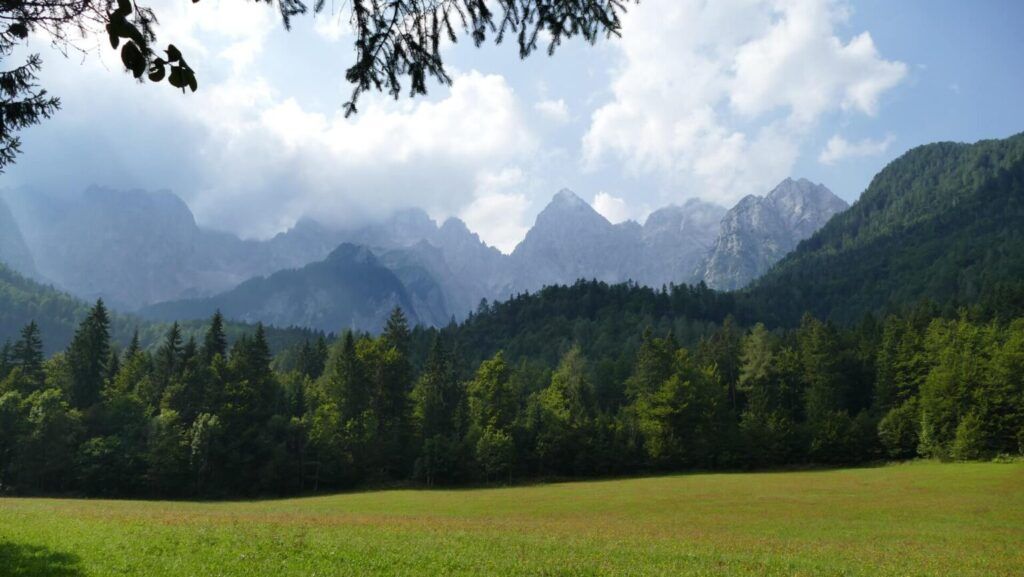
This region alone provides much of the Slovenian entertainment with its casinos and wine-producing areas. Less than an hour from here is the Vipava Valley, very famous in Europe for its quality wines. But in this modern university town, you will find far more than wine and casinos. It could not, therefore, be missing from the list of places to visit in Slovenia! This is a small list of unmissable things:
- Solkan Bridge is the longest stone arch railway bridge in the world. We recommend that you come in the summer to visit this bridge. During the weekends, there is a service with a historic steam locomotive that makes unforgettable trips on the Isonzo, one of the most beautiful rivers in Europe.
- Otliško Okno is the natural window on Otlica. It is a rocky hole where you can admire a unique view over the entire valley of Vipava. It is said that this hole was caused by the Devil’s fall from heaven, who pierced the rock with his horn.
- Vipavski Križ is a fundamental city and the valley’s proper centre. This small village seems right out of a book of fairy tales and is one of the greatest examples of the Middle Ages in Slovenia.
- The source of the River Vipava, or the only one with a mouth shaped like an inverted delta in all of Europe. This area is particularly loved by fishermen for the abundance of its waters. Among the fish to taste here is the famous marbled trout.
Postojna Caves
We have spectated beaches, lakes and mountains, but the Slovenian beauties are not over yet. Do include the Postojna Caves in an itinerary in Slovenia. They are among the most visited in Europe, ready to conquer every age group. Here you can take a tour of about 5 km, 4 of which can be travelled by historic locomotive that has been operating for 140 years, and one on foot. You can fall in love with assorted stalactites, fantastic animals and underground chambers. The most famous rocks are “the Skyscraper”, named as such because it is the most impressive, with a height of 16 metres, and “the Brilliant”, which owes its name to its crystalline white colour and is now a symbol of the caves.
You can visit the “Nursery” in Postojna, which houses about 150 species of animals. Among these is very famous the Proteus Anguinus, or the Olm. This reptile is extraordinary! It is among the few in the world that can survive without eating, or rather its metabolism is so slow that can go without feeding for very long periods and when it does it consumes crustaceans or its own larvae. Other curiosities about the Proteus? It can reach 100 years of age! Another of Slovenia’s attractions is near the caves: Predjama Castle.
The largest cave castle in the world today is primarily a cinematic location. However, in the past, it offered refuge to its owner Erazem Predjamski in the 15th century. Every year, there are organised events, medieval days, markets and real camps.
Kranjska Gora
In the heart of the Alps, on the border between Italy and Austria, is Kranjska Gora. It is an ideal destination to visit both in summer and winter for every traveller who craves active holidays. During the winter, alpine skiers compete, trying to set new records. In summer, cyclists put their legs to the test on the slopes of this small town’s roads (quite steep if we consider that we are in the mountains).
Those who worship hiking should attempt the route to Peričnik and its waterfalls. At 52 metres high, they are the highest in Slovenia. Another thing to do in this area is to walk the Vršič Pass and “the Russian road” that will take you to the Russian chapel, or a church made of wood, dedicated to Saint Vladimir. From this route, you can also reach the “Prisank Window”, the most famous of the Julian Alps and one of the largest natural openings in Slovenia.
The Zelenci Nature Reserve
A natural beauty that cannot be missed on our itinerary in Kranjska Gora is the Zelenci Nature Reserve. It is located at the northern end of the Triglav National Park and is home to rare plant species such as the carnivorous drosera, a species of plant that catches its prey uniquely, trapping them in its small gelatinous tentacles.
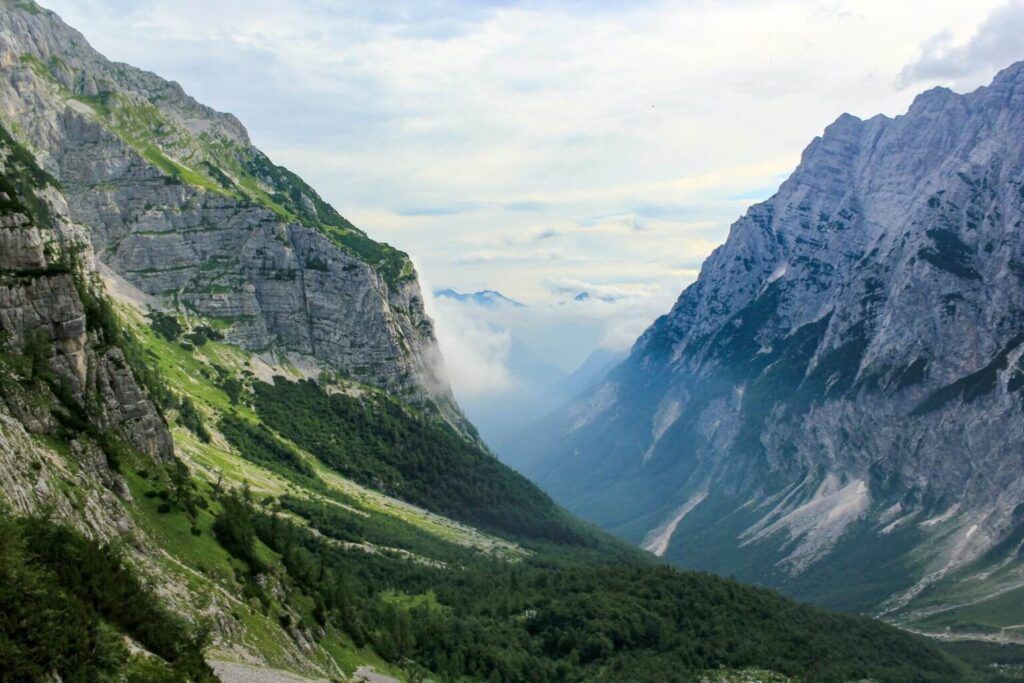
Here you can witness an exceptional green experience. The lake and the marshy surroundings can only be reached by passing through a wooden walkway, designed not to damage the surrounding nature.
Mount Triglav
Another place to visit in this part of Slovenia is Triglav, the “sacred mountain”, the national symbol. It is an emblem of Slovenian independence. It was purchased by the parish priest of Dovje, Jakob Aljaž, to protect it from Germanisation. The easiest route to reach the summit is also the longest. We are talking about 7 km through the valley of the Krma to reach the tower of Aljaž, its highest point. The valley is ready to conquer you with its greenery and sweetness, while the summit is geographically harsher and reminds us of the Dolomites.
When to visit Slovenia
We talked at length about places to visit in Slovenia, so let’s take a look at when it’s best to go. Although the country is relatively small, different micro-climates are present. The coastal area is Mediterranean, similar to that of Italy. Here, the temperature is generally mild and rainfall is never abundant throughout the year. Spring is the perfect time to visit these areas, with its Goldilocks blend of not-too-hot nor too-cold temperatures that allow you to enjoy all its scenic beauties.
On the other hand, in Slovenia’s mountainous area, the climate is alpine with quite cool summers but often rainy, and winters dominated by cold and snow. On the other hand, in inland areas, the seasons are more defined. In summer temperatures rise considerably, while they often reach freezing with heavy rainfall and snow in winter. To enjoy the best of the cities, we, therefore, advise you to visit in spring and autumn, to avoid the hot summers or being snowed in.
WeRoad takes you to Slovenia
In such a small country but packed with things to do, a WeRoad itinerary is an absolute must!
The all-around WeRoad Slovenia tour will let you immerse yourself in the valleys of the Julian Alps. Here, there is the perfect mix of adventure with the discovery of the shepherd village Velika Planina and the Logarska Valley. You can also enjoy rafting along Plezzo and the Isonzo River. Additionally, you can take in the calm view of magnificent lakes such as the less-known Bohinj and the iconic Bled.
In short, don’t you feel like leaving with just your backpack, wanting to discover all that nature offers in such a green and unique country? Of course, you do!

